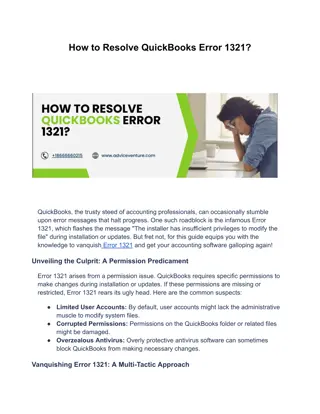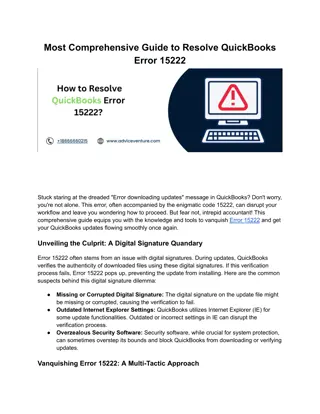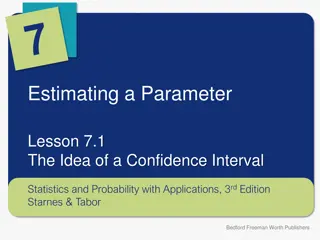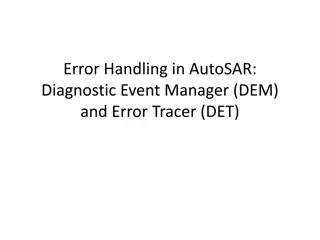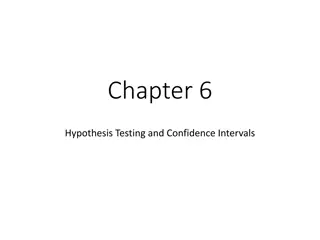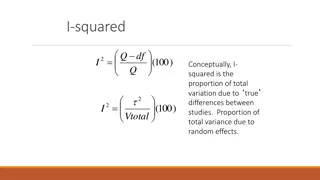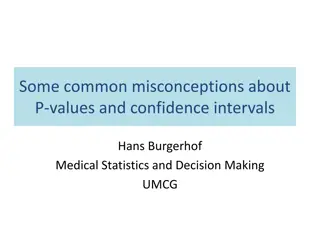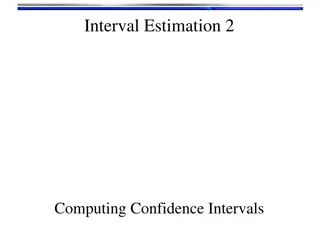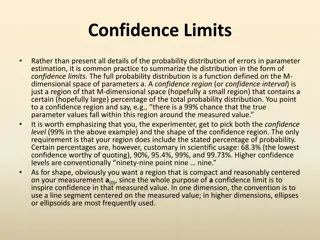Statistics for Social Understanding - Confidence Intervals and Margins of Error
Comprehensive review on confidence intervals, margin of error, and population proportions in statistics for social understanding. Covers the significance of different confidence levels and sample sizes in estimation.
Download Presentation

Please find below an Image/Link to download the presentation.
The content on the website is provided AS IS for your information and personal use only. It may not be sold, licensed, or shared on other websites without obtaining consent from the author.If you encounter any issues during the download, it is possible that the publisher has removed the file from their server.
You are allowed to download the files provided on this website for personal or commercial use, subject to the condition that they are used lawfully. All files are the property of their respective owners.
The content on the website is provided AS IS for your information and personal use only. It may not be sold, licensed, or shared on other websites without obtaining consent from the author.
E N D
Presentation Transcript
Statistics for Social Understanding, Second Edition NANCY E. WHITTIER TINA WILDHAGEN HOWARD J. GOLD
Chapter 8 REVIEW SLIDES
A. There is a 95% chance that the sample mean falls between 12 and 25 miles. Which option(s) gives a correct statement about the 95% confidence interval that extends from 12 miles to 25 miles? There is a 95% chance that the confidence interval contains the true population mean. B. C. Over repeated sampling, 95% of confidence intervals will contain the true population mean.
Does this confidence interval contain the population proportion? A. No B. Yes
How large is the margin of error for this confidence interval? A. .17 B. .40 C. .17 D. .20
This is a 99% confidence interval. If we calculated a 90% confidence interval, would the margin of error change? A. Yes, it would get smaller B. Yes, it would get larger C. No.
You are estimating two separate population proportions with 90% confidence intervals. One sample has 100 observations, and the other has 200 observations. Will you use a different z- score for these confidence intervals? A. No B. Yes
You are estimating two separate population means with 90% confidence intervals. One sample has 100 observations, and the other has 200 observations. Will you use a different t-values for these confidence intervals? A. No B. Yes
This figure shows a set of t-distributions. Which t-distribution has the least degrees of freedom? A. Yellow distribution B. Dashed red distribution C.Dashed turquoise distribution D.Dotted blue distribution





